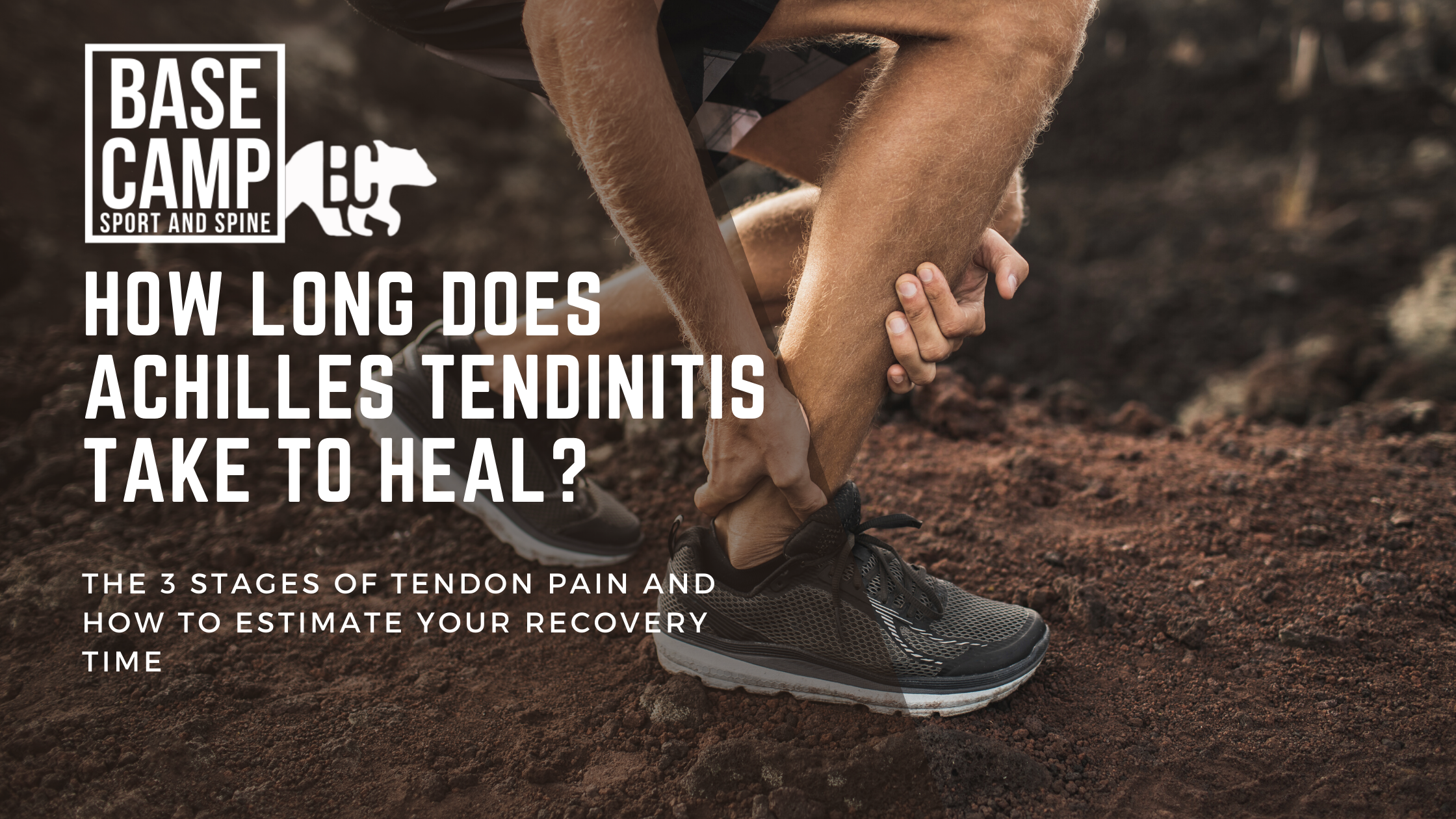
Blog
want to take a crack at your injuries from home?
Check out our blog posts and find the topics specific to you
Topics:
Thoracic outlet syndrome
Understanding Thoracic Outlet Syndrome and Ways to Treat It
What is it?
Let's talk about a condition called Thoracic Outlet Syndrome (TOS) and how we can deal with it. This discussion will cover the symptoms, what to expect, and the benefits of treatments like manual therapy and chiropractic care.
Breaking Down Thoracic Outlet Syndrome
Imagine your body as a busy highway, and TOS is like a traffic jam that affects nerves, blood vessels, and muscles. When these pathways get squeezed, it can lead to Thoracic Outlet Syndrome.
Symptoms
TOS can show up in a few ways:
1. Strange Feelings: You might experience tingling or numbness in your fingers or hands.
2. Pain: You could feel aching or sharp pain in your neck, shoulder, or arm.
3. Weakness: Your arm might feel weaker than usual.
What to Expect
The good news is, TOS isn't a forever problem. With the right care, many people get back to their normal activities. It's about giving your body some care to help it bounce back.
Treatment Options: Manual Therapy and Chiropractic Care
Now, let's talk about ways to make things better. Two effective methods are manual therapy and chiropractic care.
1. Manual Therapy:
- This is like a targeted massage that focuses on specific areas to release tension and improve movement.
- Skilled therapists use their hands to make your muscles and joints feel better.
2. Chiropractic Care:
- Think of a chiropractor as someone who helps your body align correctly, especially your spine.
- With gentle adjustments, chiropractors can relieve pressure on nerves and make your body work better.
Why Choose Manual Therapy and Chiropractic Care?
These treatments have some cool benefits:
1. No Surgery Needed: You won't need big operations or scary procedures. These therapies work naturally with your body.
2. Focused Care: Instead of just treating the symptoms, manual therapy and chiropractic care target the root of the problem.
3. Overall Wellness: People often feel more energetic and sleep better after these treatments. It's like a boost for your whole body.
Conclusion
In a nutshell, Thoracic Outlet Syndrome doesn't have to be a long-lasting issue. With simple, hands-on treatments like manual therapy and chiropractic care, you can get back to feeling good. These methods are like giving your body a little tune-up – helping you move better, feel better, and get back to your regular routine.
Cheers to a healthier, pain-free you!
5 Ways to keep running this winter
I would rather shop at Costco on a Saturday morning than run 1k on a treadmill. So obviously, I have found some key pieces of gear to keep me running and training outside during the winter. And having the right gear/kit also decreases your risk of injury.
1. Merino Wool Base Layers
If you haven’t made the investment, now’s the time. High quality merino wool is soft to the touch and a natural fiber. The structure of the strands make it antimicrobial which means it won’t stink and you can get away with wearing it several times before it needs washing. The fibers are hollow creating space for moisture to move away from the skin and keep you warm while moving. It’s really common for my pieces to be totally soaked but I’m unaware until I get back to the car and start peeling them off.
There are also several price brackets for wool depending on what your budget is but it’s important to remember that it’s an investment and part of your kit. Look for something that is atleast 50% merino wool.
2. Winter Running Socks
Another plug for wool socks here but some brands make merino socks specifically for running in the winter. They have extra thick fiber around the coolest parts of the foot but don’t add a ton of bulk to the places where it is less important.
3. Studding your shoes
Your tires aren’t the only rubber on the road that have the option of studding. You can stud your running shoes as well. You can easily go to the hardware store and get sheet metal screws that are ⅜ to ¼ inch at number 10 or 8. The hex shape of the screw bites into the ice when you run on them. You can leave them in a pair of your shoes for those icy days. (Obviously don’t put them in your super thin minimalist shoes.) This is a cheap way to save a little cash so that you can buy more merino ;)
DIY Ice Spikes for Winter Running
4. Buff
I have about 40 buffs sitting in a basket by our door. But I have a particular love for the fold that covers my forehead and mouth on really cold days. I almost always run with a buff in the winter so it’s nice to know all the different ways to use one based on how the run is going.
5. Emergency Kit
It’s important to understand changes to risk when we are active in the winter. During the winter I add these things to my running vest. They add a little weight but since the bear spray can come out, it’s not so bad.
Emergency Blanket
Hand Warmers
Spare Buff (sometimes they wet out and it’s disgusting)
Headlamp (it’s gonna get dark)
See ya out there!
Dr. Sam Krieg
Chiropractor at Base Camp Chiropractic and Sports Rehab
Vernon, BC
How long does it take for Achilles tendonitis to heal? (updated 2025!)
Achilles Tendon pain can be super frustrating. Learn how long it might take you to recover
Achilles Tendon pain can be INCREDIBLY frustrating.
This is especially true if you can’t participate in your activities of choice because of the pain. I often see Achilles Tendinopathy in runners, hikers, volleyball players… It sucks for everyone.
The most common question I get when someone comes in with Achilles Tendon pain is “how long is this going to take?”
This is not my favourite question to answer, because Achilles Tendon pain can last a LONG TIME.
The short answer to that question is “1-12 months”, but that doesn’t really help anyone. The slightly longer answer to that question is “it depends”, which ALSO is not very helpful…
In order to estimate your recovery time, you need to understand two things:
Severity and Stage of your injury
Other factors that influence your performance
Let’s break it down a little bit, and you can see where you might fall in the estimated recovery time.
Stop letting Achilles pain slow you down!
Get started with our client success guide.
Where does it come from?
Why does it come back?
How to do a self-assessment at home
Recovery expectations
and more!
Grading the Severity and Stage of your Injury
Achilles Tendinopathy falls into 3 Stages:
Acute (new onset of pain, up to 2 weeks)
Subacute (pain for 3 weeks-2 months
Chronic (pain for 3 months plus)
The longer it has been since the onset of injury before you take action, the longer it takes to recover.
Acute Achilles Tendinitis will usually calm down in 3-4 weeks (I say CALM DOWN, not GET BETTER here. This is explained later in this article under the header ‘Calmed Down vs Gotten Better).
Subacute Achilles Tendinopathy will usually take 2-6 months to calm down. (Again, not better yet)
Chronic Achilles Tendinopathy is a tricky one and can take anywhere from 3 months to 18 months to calm down and get better.
FACTORS THAT INFLUENCE RECOVERY TIME
This list is a long one, so I will only list the ones I feel are most important. These include:
Overall Health
Crappy Diet? Super stressed out? Smoker? Comorbidities like diabetes, metabolic syndrome or heart disease? All of these things lengthen the expected recovery time.
Mindset
Positive mindsets win the rehab game.
Sleep
You can’t out rehab 5hrs per night of sleep, especially while trying to recover from an injury. You NEED 8hrs + of sleep per night if you want to get better in a reasonable time and keep the injury from coming back.
Rehab Plan
Your rehab plan needs to be well-thought-out, progressive, and appropriate to both your current state and the activities you want to get back to. If you are a runner and your rehab plan does not involve running at some point, you are following the wrong plan. Volleyball? You better be jumping at some point in your plan. (But not too much too soon…)
Calm Down vs Get Better
This happens time and time again. Someone comes to see me and together we are able to get them out of pain, and they feel better, so they decide to cancel their follow up and get back to their activity.
Inevitably, a couple of weeks later they are back in my office, 2-steps back.
This is because their injury was not fully rehabbed. Only their PAIN is better, but they have not been fully prepared to get back into their activity at 100%. This takes time, deliberate effort, and a well-thought-out progressive rehab plan.
Moral of the story: just because the pain goes away, does not mean that you are ‘better’ (especially true with Tendon injuries).
Rehab programs should generally have 3 Steps.
Step 1: RESET - Calm Stuff Down
Step 2: RESTORE - Build Back Up
Step 3: RELOAD - Bridge the Gap
MOST rehab plans stop after calming stuff down. SOME plans do a decent job of building strength and endurance back up. VERY FEW programs bridge the gap between recovering from an injury and performing the way you want to.
Need some help?
That is where we come in. If you are ready to get on a plan that will get you back in action and back to doing the things you love, and KEEP THIS INJURY FROM COMING BACK, we can help.
Author: Dr Mark Murdoch, Chiropractor and Co-Founder at Base Camp Sport and Spine in Vernon, BC.
Mark Murdoch is a Doctor of Chiropractic with a Master’s Degree in Sports Medicine.
Contact: drmurdoch@basecampclinic.com
Book an Appointment with Dr Murdoch: book here
Instagram: Base.Camp.Doc
Understanding Shoulder Labrum (glenoid) Injuries: Treatment and Recovery
The shoulder labrum is an important part of the shoulder joint that helps keep it stable and supports various movements. When it gets injured, it can cause pain and limit shoulder function. This article explains what the shoulder labrum is, common causes of injury, treatment options, especially focusing on active care and rehabilitation, and how long it takes to recover.
What is the Shoulder Labrum?
The shoulder labrum (aka glenoid labrum) is a ring-shaped piece of cartilage found inside the shoulder socket. It acts like a cushion to keep the shoulder joint stable and helps it fit the upper arm bone properly. It also attaches ligaments and tendons, which are important for shoulder strength and movement.
Causes of Shoulder Labrum Injury:
1. Acute Injuries: Falling, getting hit, or dislocating the shoulder can damage the labrum.
2. Repetitive trauma: Doing activities that involve lots of overhead arm movement, like throwing in sports or lifting heavy objects, can wear down the labrum over time.
3. Age: As people age, the labrum can naturally weaken and become more prone to injury.
4. Pre-existing Shoulder Conditions: Certain conditions, like having an unstable shoulder joint or certain bone shapes, can increase your risk for labral tear.
Treatment Options:
1. Non-Surgical Treatment:
- Rest: Taking a break from activities that make the shoulder hurt to reduce pain and swelling.
- Therapeutic Exercise: Doing exercises to make the shoulder muscles stronger, improve motion, and stabilize the joint.
- Pain Medicine: Taking over-the-counter medicines like ibuprofen can help with pain and swelling.
- Changing Activities: Avoiding things that make the pain worse.
2. Active Rehabilitation:
- Exercises: Specific exercises to make the shoulder more stable, flexible, and stronger. These can include exercises for the muscles around the shoulder, shoulder blade, and balance training.
- Learning Proper Movements: Working on using the shoulder correctly to prevent future injuries.
- Gradual Return to Activities: Athletes might do exercises related to their sport to safely get back to playing.
3. Surgery:
- In severe cases or when other treatments don't work, surgery might be needed to fix or rebuild the labrum.
Recovery Time:
How long it takes to recover from a shoulder labrum injury depends on how bad it is, the treatment chosen, and the person's individual situation. Here's a general idea:
1. Non-Surgical Treatment: With rest and therapeutic exercise/rehab, most people start feeling better within a few weeks to several months. It might take several months to a year to fully recover.
2. Active Rehabilitation: Those who actively participate in rehab exercises usually recover more quickly. Going back to daily activities and sports can take anywhere from a few weeks to several months, with a focus on taking small steps.
3. Surgery: Recovery after surgery often involves several weeks of keeping the shoulder still and then a longer period of rehabilitation. It could take six months or more to get back to how things were before the injury. The good news is that most labral injuries do not require surgery
Conclusion:
A shoulder labrum injury can be tough, but with the right treatment and rehab, people can regain shoulder function and lower the risk of future injuries. Active care and rehab are important in this process because they help people rebuild strength, stability, and confidence in their shoulder. Always consult with a healthcare professional for a proper diagnosis and treatment plan that suits your specific situation.
Whiplash: Understanding Treatment Options and Recovery Time
AKA: Whiplash-Associated Disorders (WAD)
Whiplash is a common injury resulting from the rapid back-and-forth motion of the neck and head, often occurring in car accidents, falls, or sports-related incidents. It can lead to significant pain and discomfort, affecting one's daily life. In this article, we will delve into the causes, symptoms, treatment options, and prognosis of whiplash.
Understanding Whiplash
Whiplash occurs when the neck undergoes a sudden, forceful movement, typically hyperextending and then hyperflexing. This abrupt motion can damage the soft tissues in the neck, including muscles, ligaments, and tendons, leading to a range of symptoms.
Symptoms of Whiplash
1. Neck Pain: The most common symptom of whiplash is neck pain, which can be sharp, dull, or throbbing in nature.
2. Stiffness: A feeling of tightness and reduced range of motion in the neck is common.
3. Headaches: Whiplash can trigger tension headaches, which are characterized by pain in the head and neck.
4. Shoulder and Upper Back Pain: Pain and discomfort can extend to the shoulders and upper back.
5. Tingling or Numbness: Some individuals may experience tingling or numbness in the arms or hands.
6. Fatigue: Whiplash can lead to fatigue due to the constant discomfort.
Treatment Options
Rest: In the immediate aftermath of a whiplash injury, rest is crucial to allow the damaged tissues to heal.
Therapeutic Exercise: A clinician can design a customized exercise and stretching regimen to improve neck mobility and strength.
Heat and Cold Therapy: Applying heat or cold packs to the affected area can help alleviate pain and reduce muscle spasms.
Spinal Manipulative Therapy: Chiropractors can adjust the spine to relieve pain and improve mobility.
Pain Medication: Over-the-counter pain relievers like ibuprofen or prescription medications can help manage pain and reduce inflammation.
Injection Therapy: In severe cases, injections of corticosteroids or lidocaine may be recommended to reduce inflammation and pain.
time to recovery
The prognosis (time to recovery) for whiplash varies from person to person and depends on the severity of the injury and the effectiveness of treatment. In most cases, whiplash injuries improve within a few weeks to months with appropriate care. However, some individuals may experience chronic pain or complications.
Factors that can influence prognosis include:
1. Severity of Injury: More severe whiplash injuries involving structural damage may take longer to heal.
2. Timely Treatment: Receiving prompt and appropriate treatment can improve outcomes.
3. Individual Factors: Factors such as age, overall health, and pre-existing conditions can impact recovery.
4. Compliance with Treatment: Adhering to prescribed treatment plans and exercises is essential for a favourable outcome.
5. Rehabilitation: Engaging in rehabilitation exercises and therapies can help restore strength and flexibility.
Whiplash is a painful and often disruptive injury, but with the right treatment and care, most individuals can expect to recover fully. It's essential to consult a healthcare professional for an accurate diagnosis and personalized treatment plan. By following medical advice and being patient during the healing process, individuals with whiplash can look forward to a positive prognosis and a return to their normal activities.

















